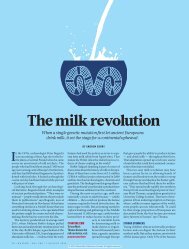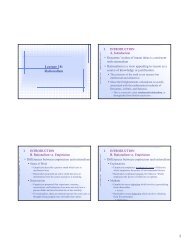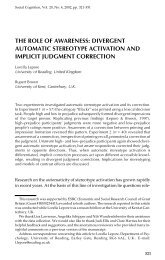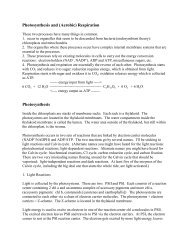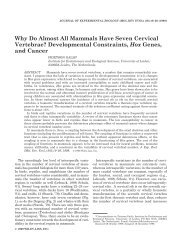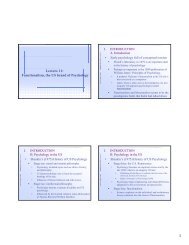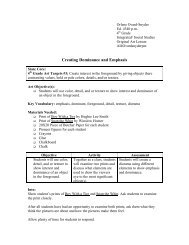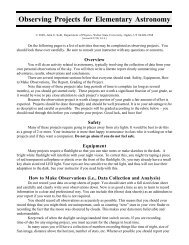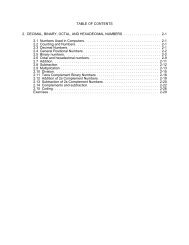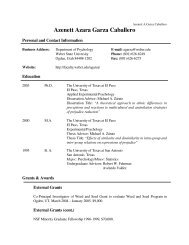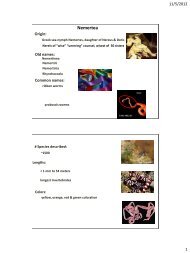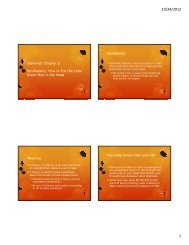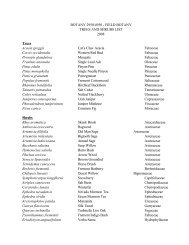3 - Weber State University
3 - Weber State University
3 - Weber State University
Create successful ePaper yourself
Turn your PDF publications into a flip-book with our unique Google optimized e-Paper software.
120 Chapter 3 Exploring Linux Filesystems<br />
If it is no trouble, could you kindly let me know such that<br />
I need not wait until next year when I visit your lodge?<br />
Regards,<br />
Mackenzie Elizabeth<br />
-UUU:----F1 project4 All L1 (Text)---------------------------------<br />
For information about the GNU Emacs and the GNU system, type C-h C-a.<br />
The Emacs editor uses the Ctrl key in combination with certain letters to perform special<br />
functions, can be used with the LISP (LISt Processing) artificial intelligence programming language,<br />
and supports hundreds of keyboard functions such as the vi editor. Table 3-8 shows a<br />
list of some common keyboard functions used in the Emacs editor.<br />
Unfortunately, the Emacs editor is not an easy-to-use editor because the user must memorize<br />
several key combinations to work effectively or use advanced features. If you run Emacs within<br />
a GUI environment, a graphical version of the Emacs editor is started. The graphical Emacs editor<br />
is much easier to use because the command-line key combinations are replaced by graphical<br />
icons, menus, and optional sidebars for many features. If you type emacs project4 within a<br />
GUI environment, you will start a graphical Emacs session, as shown in Figure 3-3.<br />
Another text editor that uses Ctrl key combinations for performing functions is the nano editor<br />
(based on the pine UNIX editor). Unlike vi or Emacs, nano is a very basic and easy-to-use<br />
editor that many Linux administrators use to quickly modify configuration files if they don’t<br />
need advanced functionality. If you type nano project4, you will see the following displayed<br />
on the terminal screen:<br />
GNU nano 2.2.4 File: project4.txt<br />
Hi there, I hope this day finds you well.<br />
Unfortunately we were not able to make it to your dining<br />
room this year while vacationing in Algonquin Park - I<br />
especially wished to see the model of the Highland Inn<br />
and the train station in the dining room.<br />
I have been reading on the history of Algonquin Park but<br />
no where could I find a description of where the Highland<br />
Inn was originally located on Cache lake.<br />
If it is no trouble, could you kindly let me know such that<br />
I need not wait until next year when I visit your lodge?<br />
Regards,<br />
Mackenzie Elizabeth<br />
© Cengage Learning. All rights reserved. No distribution allowed without express authorization.




